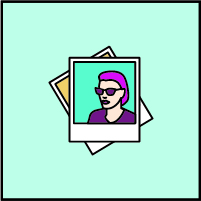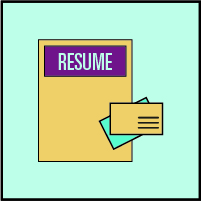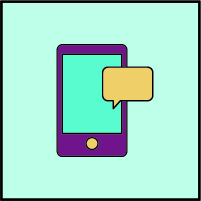Portfolio Tips to Get That Internship
WANT TO SEE MORE LIKE THIS?
Sign up to receive an alert for our latest articles on design and stuff that makes you go "Hmmm?"
Each summer we welcome design interns to our team from schools all across the country. Our internship is not a “coffee run” gig. We offer an opportunity to get your hands dirty, do real work and make an impact for our clients. In turn, interns walk away with real-world work samples and experiences and are a step ahead of new grads who only have classwork in their portfolios.
But first, you have to actually get hired. Here are our top presentation and interview tips for students who are eager to land an internship:
1. Have a website portfolio

You must have a website*. No ifs, ands, or buts. This may seem obvious, but you’d be surprised. In the digital world, portfolios are often reviewed on the go. Our creative director may be reviewing your work on the train or from the couch at home. A low res PDF of your work can be a nice supplement at times, but it may not make up for a live portfolio.s.
Sites like Behance and Dribbble are great for showing ALL of your work (see point #2), but they lack focus and your personal brand (see point #4). With tools like Squarespace and Adobe, you can get a site up in no time with zero coding skills. Or, this is a chance to go the extra mile with a well-developed WordPress site, however custom or templated you feel comfortable with.
*We also recognize not all applicants can afford to have a website. So take this with a grain of salt. If you have a delightful PDF to share, it’s the work that counts.
2. Don’t show the kitchen sink
Focus on your best work. If you only have five great pieces, show those. If you have more than 10 samples, it could be too much—especially if they aren’t all representative of your best work. Pieces that are only 2 out of 5 stars may prevent you from getting an interview.
Also, consider variety. Depending on the type of experience you have, we would like to see samples that cover the gamut. Branding, typography, print layout, web design, animation, campaign thinking with pieces across multiple mediums, and varied design styles across all your work to show your ability to work for any type of client. Any well-done Powerpoint designs are a bonus!
3. Lead with your best work
The first piece on your site should be your pièce de résistance. If someone asks you what you are most proud of, it should go here. If you lead with a sample that is not as strong, you risk not capturing the reviewer’s attention, causing them to abandon your site.
4. Own your personal brand

How are you separating yourself from all of the other designers out in the world? Or from your classmates who may be applying for the same internship, with the same class work?
Your personal brand could be what people will remember as they are sorting through dozens of portfolios and emails. Our Creative Director, for example, has glasses that everyone always thinks are upside-down. She realized this was her brand: people remembered her for it. So, she turned it into her social media handles and her personal brand on her personal site. Push yourself to think beyond designing a monogram of your initials.
Your brand also should be reflected in an About page on your web portfolio. Here is your opportunity to show employers how you fit into their culture. We want insight into your background and personality. This is also a place to link to social media feeds, but if you do, make sure they are culled of non-relevant photos. If we are serious about hiring someone, we will even do a little digging.
5. Show your process
The finished piece is important, but we want to see how you got there. Sketches with thumbnails of logo variations, wireframes of websites, and iterations of your work help us see how you get from A to Z, and all of the zig zags in between. We also want to know the purpose of the project with some well-done writing.
6. Have a well-designed resume

Your resume is your first opportunity to show us you understand typography, grids and the fundamentals of layout. If you have bullets that don’t properly wrap, widows, and (heaven forbid) typos, we may not even make it to your portfolio.
Here’s an inside tip: Infographic charts to show level of ability in programs are all the rage in designed resumes. Guess what. We hate them! There is no way a designer fresh out of school is 100% fluent in Photoshop, no matter how talented you are. In 10 years, will you be 1000%? And that 100% is compared to whom? If you want to show technical skills there are other ways around it.
7. Write a thoughtful email
Show that you did your research and truly want to work with us. When we get blindly sent emails, it shows the applicant doesn’t care. A well-written subject line can be all you need to be remembered. If we liked your work and email but didn’t have a position open at the time you applied, we may think of you for a future role. If there is something personal that you wrote that triggers a memory in your email, we may not remember your name but have a keyword we search for it in our email. Voila! Interview booked!
8. Make sure your ducks are in a row
Is your email, phone and website in your email signature? Make it easy for hiring managers to contact you. If your URL is only in a PDF, that is a hurdle for us to view your work.
Did you spell check? Your site, resume and email? Spelling errors are an immediate no, as it shows you didn’t take time to proof your work.
Did you address everything to the right company? We have received resumes in the past addressed to the wrong company because the applicant was applying to every agency in Chicago. Another immediate no, even if your work is superb.
9. Ace the phone interview

Before we ever invite a candidate to an in-person interview, we set up a 20-minute call to have an introductory chat. Be ready to talk about your classes, your favorite project, and never answer with “I don’t know,” when the question is something as general as “What is your favorite website?” It’s OK to take a moment to think before you answer.
10. Nail the in-person interview
Don’t forget to bring your portfolio or your resume. If you show up empty handed, you can’t assume to use someone else’s computer to show your work.
Bonus tip: never solely rely on the internet to share your work. Have a presentation prepared, and your website as a back-up. What if the Wi-Fi isn’t working or your computer can’t connect?
A presentation custom tailored to the role also gives the team something new to look at outside your website since we have already visited it. Once that presentation is ready, practice it so you are confident in what you want us to take away from our conversation.
Ready for an internship with Glantz? We’d love to work with you! Apply here!



